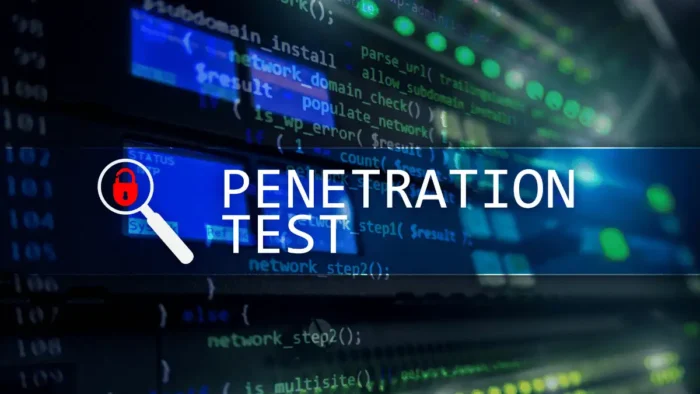In an age where digital threats lurk around every corner, the role of penetration testers has never been more critical. Penetration testing is a proactive and methodical approach to identifying vulnerabilities and weaknesses in an organization’s digital infrastructure.
These tests simulate real-world cyberattacks, helping organizations uncover and address security flaws before malicious hackers can exploit them.
In this article, we will delve into the world of penetration testing, shedding light on the most pressing challenges these cybersecurity professionals face. Additionally, we will share practical strategies and expert insights on how penetration testers can overcome these obstacles effectively.
Evolving Attack Techniques
Cyberattacks are not stagnant but are constantly in flux. Attackers continuously adapt, invent, and refine their methods to circumvent even the most robust security measures.
This continuous innovation by hackers is fueled by technology advancements, zero-day vulnerabilities, and the ability to exploit them. Digital transformation in organizations also offers more attack surfaces that hackers can exploit.
Staying updated with the latest attack methods is a monumental challenge for penetration testers. The sheer volume of information regarding new threats and vulnerabilities is overwhelming. This makes sorting through the noise to identify relevant updates a daunting task.
To overcome this, penetration testers must be consistent learners. A promising avenue is getting a Master’s Degree in Machine Learning online.
Another good idea is conducting red teaming exercises to simulate real-world attacks in the organization. It can help penetration testers stay sharp and adapt to evolving attack techniques.
Complex Network Architectures
Network architectures have evolved into intricate, multifaceted structures in today’s interconnected world. This web presents a significant challenge to penetration testers.
Organizations have expanded their networks to cater to the growing number of devices and interconnected systems. The development of heterogeneous environments, virtualization, and dynamic infrastructure have made it harder to discern network boundaries and vulnerabilities.
Penetration experts face the following challenges in navigating the complexities of architecture:
- Lack of visibility
- Attack surface expansions
- Resource constraints
- Rapid changes
Cybersecurity experts must utilize advanced network mapping tools to navigate the challenges posed by complex network architectures successfully. The tools can be used to create detailed maps of the network’s structure, identifying assets, subnets, and potential attack vectors.
Another strategy is emulating complex network environments in controlled test environments to simulate real-world scenarios. This can identify vulnerabilities and weaknesses without impacting production systems.

Legal and Ethical Constraints
Penetration testers face a complex web of legal and ethical dilemmas, from gaining unauthorized access to computer systems and data to privacy concerns when collecting sensitive data. The practice also raises concerns regarding obtaining consent for data and destroying data or systems.
Compliance with cybercrime laws and regulations is paramount for penetration testers. Reputational management and legal protection will build trust with your stakeholders. It also helps mitigate the risk of legal action, including criminal charges and civil lawsuits.
To navigate the legal and ethical constraints of penetration testing, consider the following guidelines:
- Obtain clear consent
- Understand applicable laws in cybersecurity
- Follow ethical guidelines
- Document everything
Resource Limitations
In the realm of penetration testing, resource limitations are a constant challenge that testers must address. These limitations encompass constraints on time, budget, and manpower.
To overcome resource constraints, it is crucial to prioritize assets. This entails identifying and prioritizing critical assets and high-risk areas.
Implementing automation tools for routine and repetitive tasks, such as vulnerability scanning and data analysis, can significantly reduce the manual workload. It also improves consistency and scalability.
Utilizing efficient methodologies is another effective way to maximize the available resources. Using techniques that provide comprehensive coverage with minimal resource investment, for example, threat modeling, can help pinpoint high-value targets. This enables cost-saving and resource optimization.
Communication and Reporting
Clear communication and reporting are vital components that bridge the gap between technical findings and the understanding of clients and stakeholders.
Effective communication is at the heart of successful penetration testing because it promotes transparency and builds stakeholder trust. Clear reporting allows informed decision-making and alignment with legal requirements and compliance.
A significant communication challenge for cybersecurity professionals is conveying technical information to non-technical audiences. This is because the balance between detail and clarity is difficult to strike.
The technical jargon and detail can create information overload for the audience. On the other hand, taking out too many details may change the intended message.
To address these challenges and ensure effective communication, consider the following tips:
- Tailor your message: Customize your communication and reports to your audience’s specific needs and understanding.
- Use visual aids: Utilize visual aids such as charts, graphs, and infographics to convey complex information visually and clearly.
- Encourage client engagement: Foster open and ongoing communication with clients throughout the testing process. Encourage questions and provide clarifications as needed.
- Follow up: After presenting findings, discuss them with clients to address concerns and help them prioritize remediation efforts.
- Utilize scenario-based testing: Use scenario-based testing to illustrate the potential real-world impacts of vulnerabilities. This helps clients grasp the practical significance of the findings.





